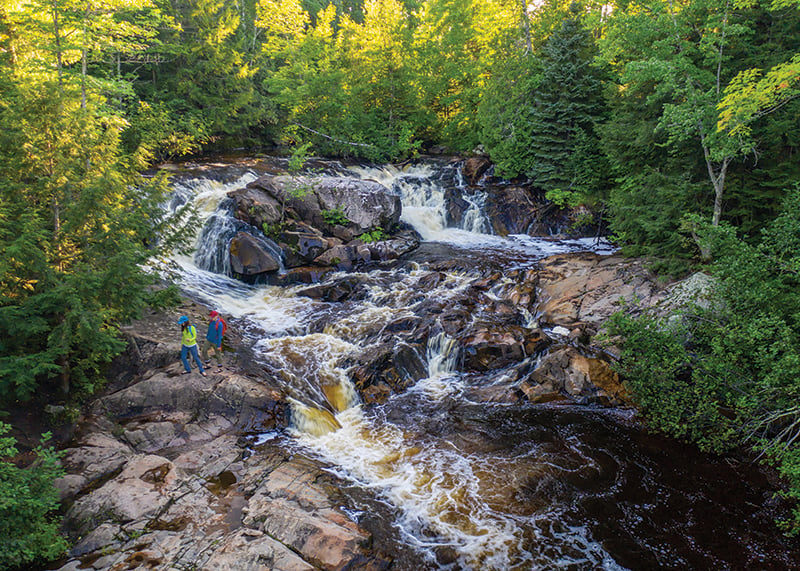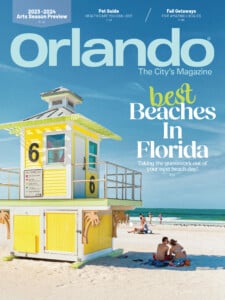Travel: At One with Nature
A journey through Crystal River introduces you to multiple bucket-list experiences.
Less than two hours from Orlando, on Florida’s dreamy Gulf Coast, Crystal River feels exactly how it sounds—pristine waters with sandy bottoms fed by warm springs, and light breezes make for the type of day that’ll make you want to curl up in a hammock and bask in the sun. But before you do, there’s much to discover, and the city’s relaxed pace is perfect for exploration.
Before all else: Manatees. Crystal River is the manatee capital of the world, and animal lovers will find this gentle creature irresistible. The best months for viewing manatees—or better yet, embarking on a manatee encounter—are November through April, when the population heads to Kings Bay to escape the winter’s colder ocean waters, rear their young and conserve energy. This difference in water temperature is enough to prevent hypothermia and offers a wonderful opportunity for a warm winter watersport: swimming with manatees.
Welcome to your bucket list experience. There’s nothing like the joy of zipping up a wetsuit, taking a boat onto the water, and becoming one with nature as you submerge yourself in Crystal River’s shallow waters for interaction with the sweet-tempered manatee. You’ll never want to get out of the water! While you can’t make first contact, as the endangered species are protected by law, you can return contact if the manatee engages you—and these curious creatures certainly will, brushing up against you in an embrace that feels like a hug or, in some instances, a kiss.
Crystal River is the only place in the United States where you can legally swim with the manatee in their natural habitat. There are several tour operators; most experiences last about three hours from start to finish and start at around $75; we opted for the semi-private tour with Fun2Dive (866.922.3483), which didn’t disappoint. No matter who you choose, be sure to book your reservations early.
If you don’t want to get into the water, there are many other ways to view manatees. Crystal River National Wildlife Refuge (352.563.2088) is the only wildlife refuge dedicated to protecting the West Indian manatee and also cares for the threatened Florida manatee. It preserves Three Sisters Springs, the last unspoiled and undeveloped spring habitat in Kings Bay. Jacques Cousteau rehabilitated “Sewer Sam,” the first documented rescued Florida manatee, at Three Sisters Springs in 1972.
Over 600 manatees migrate to Kings Bay each winter; the area is also home to bald eagles, osprey, wood storks, and other shorebirds. The 57-acre refuge has over two miles of trails and a boardwalk for optimum wildlife viewing, and non-motorized boats are permitted on its waters (to rent, tour with or bring your own).
One of the best places to see manatees year-round is Ellie Schiller Homosassa Springs Wildlife State Park (352.628.5343). This 150-acre site often referred to as “Nature’s Own Attraction,” has been a popular tourist spot since the early 1900s, and was a train stop where visitors would picnic and take a dip in the spring while train cars were being loaded with seafood and spring water. It was purchased and developed as Homosassa Springs in the 1940s and became home to exotic animals, native species and many former animal performers. One of them, “Lu,” a hippopotamus, still lives at Homosassa Springs today.
“Lu,” a fan favorite, was named as an honorary Florida citizen in 1989 by then-governor Lawton Chiles and, as of 2022, is the oldest living hippo in North America, at age 62.
They ferry visitors into the park via motorboat, which allows a gander at flora and fauna. But beware, because an alligator is almost always resting on a shady bank.
Once inside, take a journey through the Wildlife Walk, a paved, elevated boardwalk accessible for those in wheelchairs and families with strollers. It gives visitors an elevated view of the wildlife’s natural habitats.
Don’t miss the Fish Bowl Underwater Observatory, set into the main spring—it offers an up-close view of fish and manatees underwater. Visitors can also view manatees from the sundeck, a great perspective to watch during feeding time.
Homosassa Springs is also a paradise for birding enthusiasts; take a jaunt along the 0.75-mile Pepper Creek Trail to view herons, pelicans, egrets, vultures, flamingos, eagles, hawks, owls, and many more species in their natural habitat. The trail is part of the Great Florida Birding Trail, a statewide network of over 510 viewing sites.
Less than three miles from the state park lies another once-in-a-lifetime experience. It’s Historic Monkey Island, a small island on the Homosassa River on which a troop of spider monkeys live and play—climbing on platforms, swinging on ropes, and cavorting around the small replica lighthouse. G.A. Furgason, who developed Homosassa, was also instrumental in making the island an iconic attraction.
In the ‘60s, Furgason learned that a pile of rocks in the river was causing problems for fishermen. He asked his crew to pour some dirt over them and went out of town. When he returned, he noticed the island wasn’t very attractive, so he built a mini lighthouse, which still stands today.
The monkeys made their way to Homosassa with naturalist John Hamlet, who Furgason had convinced to work with him. Hamlet brought the monkeys to America to help perfect the polio vaccine; they peacefully lived on the island and were later replaced by younger monkeys. Today, resort staff cares for the remaining monkeys at the adjacent Florida Cracker Riverside Resort (352.628.2474).
Should you wish to get out on the water for a closer look, the resort has a full-service marina with boat, kayak, and paddleboat rentals. Learn more at discovercrystalriverfl.com







